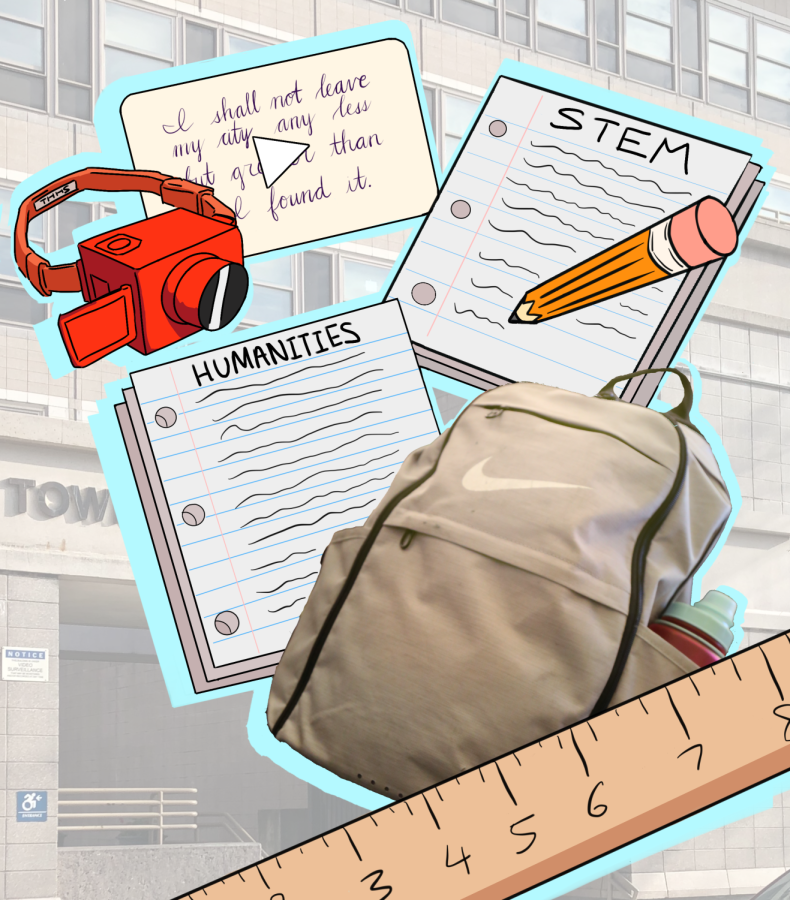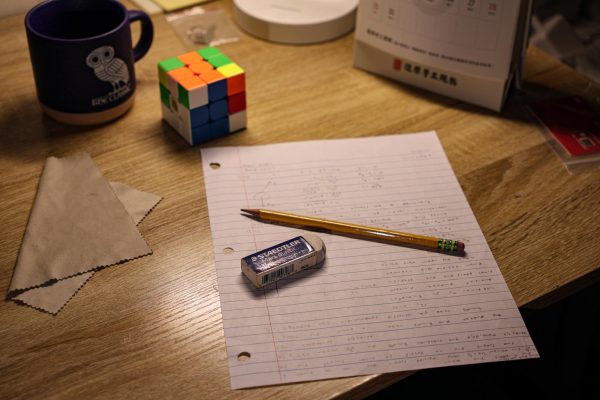Teachers assess thousands of writing and video samples from eighth grade applicants under new admissions system
Two writing samples and a video introduction are the key aspects of the 2023 admissions process.

From December to January, teachers and administrators assessed the new applications for the Townsend Harris incoming class of 2027. This year, the school required two essays, one for STEM and another for humanities, and a video. With each applicant submitting three pieces for review and nearly 5,000 total student applications, school faculty collectively assessed well over 10,000 supplemental pieces from the applicant pool.
Faculty members from across the school volunteered to help with the process of grading. They were provided with a January 17 deadline and were paid ten hours of overtime to do the work.
The school held norming sessions to train teachers on how to grade responses. According to English teacher Brian Brewer, “the different readers look at sample essays [as a group] and determine what their score should be so you get an idea of how to score.” The teachers then checked how their scores lined up with a list of recommended scores for different levels of responses and aligned their grading styles accordingly.
The teachers used a 5-point rubric to grade the essays. Assistant Principal Veronica York, who is in charge of admissions, said that the school used the rubric created by Bard High School Early College for admissions because it’s “been used and approved by the DOE for the past so many years.”
English Teacher Ryan Dunbar, who helped grade the essays, said, “I was honestly impressed. The prompts allowed for a lot of creative wiggle room for students to express who they are within the confines of those prompts.”
Dr. Brewer said he enjoyed reading the variety of responses and seeing the different skill levels on display.“We should have some really smart, talented, interesting freshmen next year,” he said.
It is too early to determine whether the new requirements have affected the number of applicants or impacted THHS in any significant way; however, Ms. York said she hopes to see the process play out over a number of years before making conclusions.
“In the world of science, you want to run things for a couple of years and be able to really look at the data,” she said.
The application assets directly graded by teachers were not the only aspect of a student’s potential admission. . These writing and video samples count for 60% of a student’s application, and their course grades from their respective schools count for 40%. The DOE will calculate their final standings, and according to the THHS admissions website, students will hear about decisions in March.
Your donation will support the student journalists of The Classic. Your contribution will allow us to purchase equipment, support our extracurricular events, celebrate our staff, print the paper periodically, and cover our annual website hosting costs.

Silga is a senior at THHS. She loves taking pictures and exploring new music.

Aastha is a senior at THHS. In her free time, she enjoys playing badminton and spending time with her friends and family. She also likes reading science-related...
































R • Apr 5, 2023 at 4:02 pm
It is nice to see the teachers’ opinions on the new admissions system.